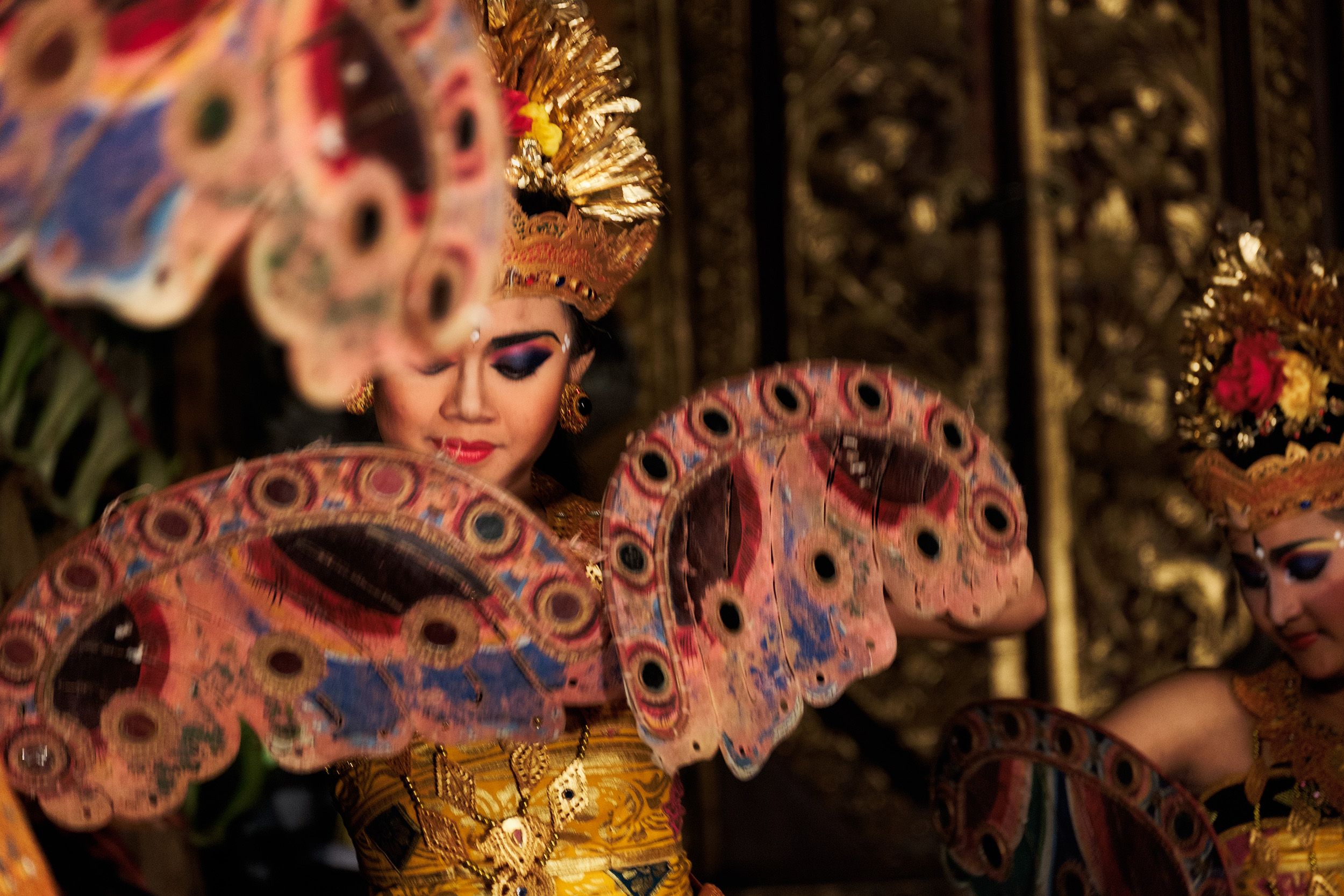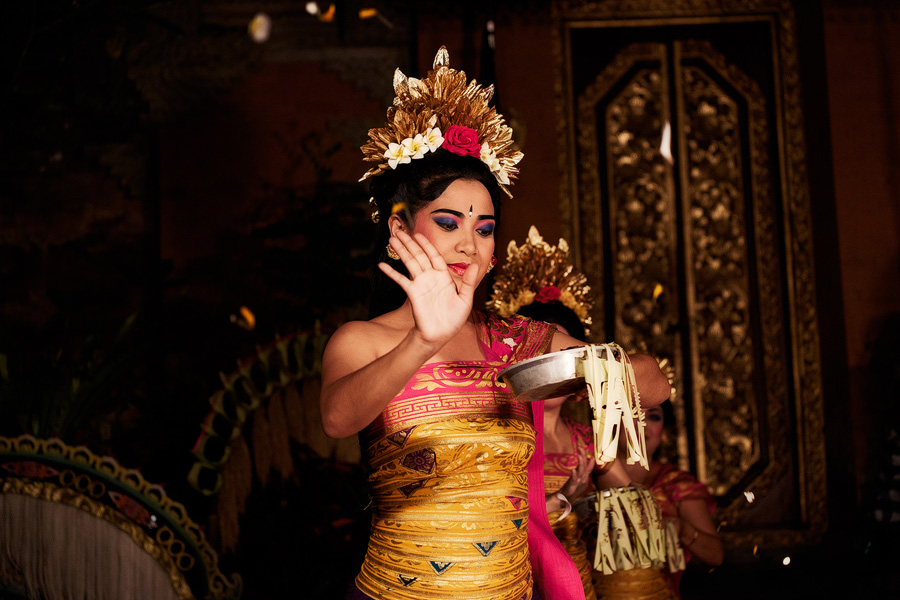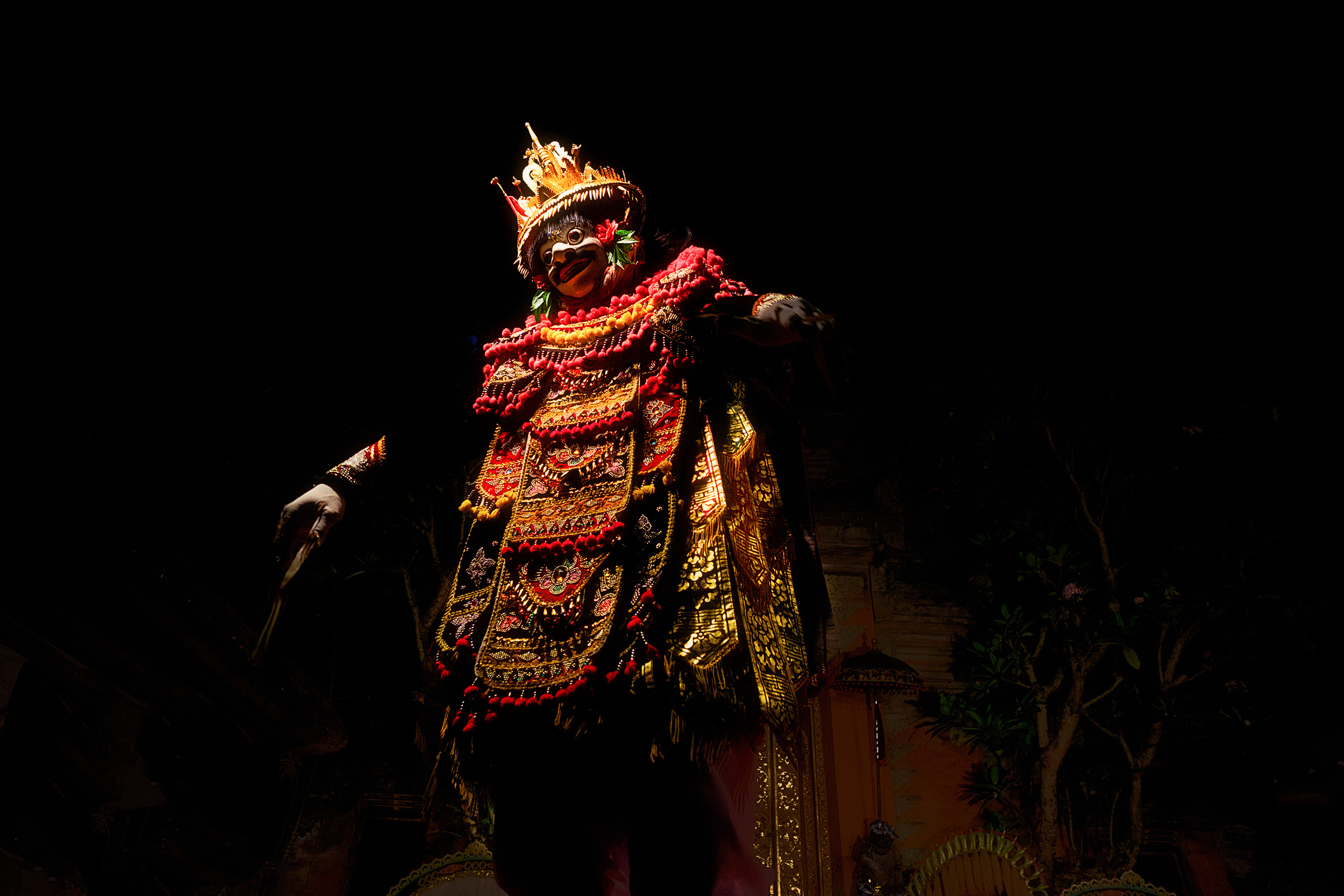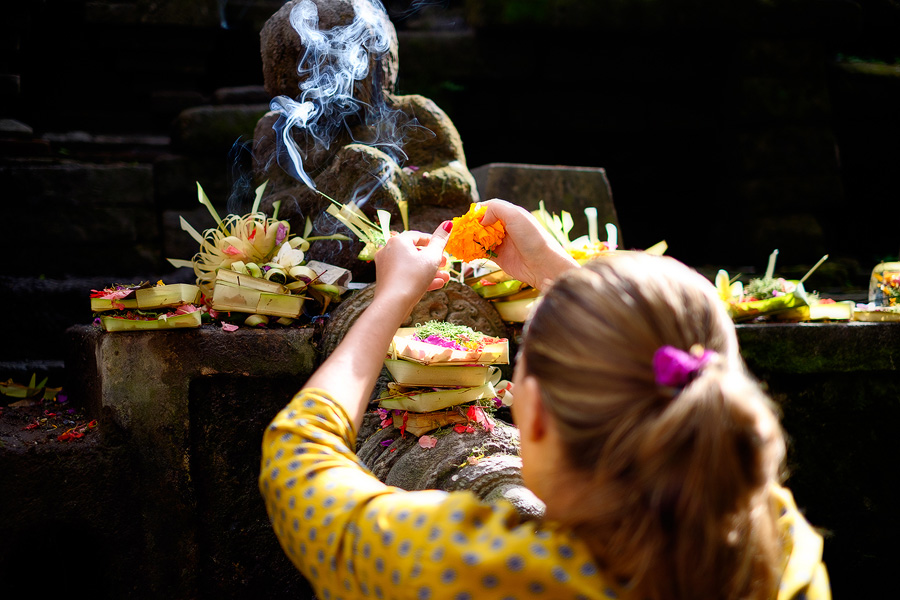TRAVELLING WITH THE FUJI X SERIES TO INDONESIA
I've just returned from 25 days in Indonesia, my first trip with Fuji cameras and my first trip without a large dSLR. We traveled the entire length of Java and Bali overland so it was important to me to have a camera that wouldn't feel heavy and cumbersome to carry around, but also one I could completely rely on to produce excellent image quality.
The experience of traveling with Fuji cameras has been a revelation! Not only in how much lighter, smaller and easier to carry around it all is, but how I've not once missed my old Nikon in terms of image quality or autofocus in any of the many situations I've encountered, from fast moving street scenes to dynamically lit landscapes. They've been brilliant, reliable and a consistent pleasure to use.
I've already written about why I decided to switch from Nikon to Fuji, but chief among my reasons was the size, weight, and sheer portability of the system. For years I carried around a huge Nikon D3 body along with two heavy zooms plus a tripod and spare batteries, and switching to the smaller D800E didn't really make much of a difference if I'm honest. The lenses and tripod were still the same so traveling with that weight in my cabin baggage and then hiking around with it, whether for street photography or landscapes, was starting to be a bit of a drag.
So on this trip I took an X-T1 and an X-T10, along with two zooms, the 10-24mm and 55-200mm, and a couple of primes, the 14mm and 35mm. This is more gear than I would usually take as Fujifilm Portugal had very kindly lent me the prime lenses and the X-T1, but even the two bodies and four lenses fitted easily into a Lowepro Photosport 200 as my carry on luggage. However, when we were in Indonesia and heading out for the day either wandering the streets and markets, or hiking to a landscape location, I usually just dropped one body and a couple of lenses in the bag with me. I could barely notice the weight and it was such a pleasure to not feel weighed down and limited by a heavy bag! I know from experience that sometimes the thought of carrying heavy kit around town all day or up the side of a mountain for a sunrise shoot can actually discourage me from taking the camera with me or make it that bit easier to stay in bed and sleep through the sunrise. This is particularly true towards the end of a trip, so having such small, light cameras goes a considerable way towards making any trip more enjoyable AND taking photographs.
As well as the Lowepro backpack I took a Lowepro Passport Sling II folded flat in my luggage. This is a pretty small bag which would probably just about squeeze my old D800 with a wide angle lens in it, but nothing more. I was able to fit a Fuji camera attached to the "large" 55-200mm along with the 10-24mm in the camera compartment, and there was still space to fit a lens case for one of the primes if I really wanted to be prepared for everything. That's a camera with three lenses covering pretty much every focal length from 10mm to 200mm (15 mm to 300mm equivalent) in a small, unobtrusive camera bag that was comfortable to carry and easy to have quick access to the gear.
Of course being light and convenient is all well and good but it's pointless if the image quality isn't there. Even from my brief experience of using Fuji cameras before I left for Indonesia I'd seen enough to know that the image quality was extremely good and I'd also developed a confidence in their usability trusting that they would perform exactly as I expected. If anything, the fact that the EVF shows me exactly what I'm going to get in terms of exposure and depth of field, as well as a live histogram, makes it easier for me to get everything right first time.
For example, one evening on the north west coast of Bali I headed along the beach to shoot sunset at a mangrove tree. I wanted to shoot with the camera just above the water and the articulating screen made that incredible easy. By flipping up the LCD I could compose, get the graduated filter in place, and check exposure without having to kneel in the water to see the screen at the back or look through the viewfinder. Even using a strong neutral density filter like the Lee Little Stopper for a very long exposure of about a minute, the LCD/EVF image gave me an accurate idea of exposure and how bright the image would be, which can save time when shooting long exposures in rapidly changing light.
I also like how when doing any exposure of a second or more, the LCD gives me a countdown (or counts up when in Bulb mode) of the exposure. None of my Nikons ever did that, it was only possible to see the length of a long exposure on Nikons's expensive remote trigger with an LCD screen.
I even found it easier to shoot sun stars as the live preview of the image and exposure makes it simple to compose and set the aperture for them without being blinded by looking at the sun.
The image above was taken on a beach on the southern coast of Bali near the famous temple of Tanah Lot. I love doing long exposures with the ocean moving around rocks but you have to be careful that a rogue wave doesn't crash over the camera. The articulating screen not only meant that I could compose without having to get on my hands and knees, but it also meant I could keep an eye on what the waves were doing while I adjusted the composition or counted down the exposure on the screen. This meant that if any wave looked like it was going to hit the camera, I could lift the tripod and camera out of the waves in plenty of time. Working just with a viewfinder makes it a lot harder to do this as you spend so much time with your eye glued to the back of the camera that you can fail to notice what's happening around you, which in the middle of waves in an incoming tide isn't ideal.
The X-T1 also dealt really well with any spray that fell on it from the sea. I already had a lot of faith in the weather proofing of the camera as I'd used it a few days earlier at the foot of a waterfall which was giving off a lot of spray and the camera had got more than the odd drop of water on it without any problem at all. Once again, with the camera a few centimetres above the water the articulating screen was incredibly useful in allowing me to compose and expose the shot without having to kneel or squat in the river.
In all of the shots above, from the mangrove tree to the waterfall, the image quality was consistently excellent. After each shot I'd see the image on the screen and be amazed at the colour rendition with the Velvia film simulation. The camera's exposure was pretty much perfect for every shot, and later on when editing the Raw files I was seriously impressed by the amount of detail in the shadows and highlights and the richness of the colour information. It used to take a fair bit of tweaking in post processing for my D800 files to look this good but the Fuji images are so good right out of the camera that they only need the slightest bit of processing before they're ready to print.
When it comes to landscapes the big test on this trip was always going to be Mount Bromo, the stunning volcano in Central Java. I'd been planning this shot ever since we'd first started putting the trip together, which was actually quite a while before my conversion to Fuji. I wanted to shoot star trails which I knew would involve shooting a sequence of over 100 long exposures over the course of an hour or so. I had no idea how the Fuji camera would deal with it, how much battery it would eat up, what the noise would be like, etc until I tried doing a similar shot in Portugal before I left. It was this shot that convinced me that not only would the the camera handle it perfectly, but it would actually be easier than with my Nikon because of the Fuji's intervalometer.
I arrived at the location high on the edge of a crater overlooking the volcanos at 2.30 in the morning. To get as much light onto the sensor as possible I shot at f2.8 using the Fuji 14mm prime, and using such a wide aperture can create a potential problem with the landscape being out of focus. It seemed obvious that I just needed to set the focus to infinity, but I wanted to be certain so I used the focus assist on the stars to make sure they were as sharp and clearly defined as possible.
Them I set the intervalometer to shoot continuous 30 second exposures for 120 shots. It's so easy to do this, it makes shooting time lapses effortless. Again, this is something that didn't come built into my old Nikon camera.
The Fuji performed flawlessly, producing pin sharp images with no noise and beautiful colour rendition. As the scene got lighter, I finished the star trail image and started shooting exposures of the volcanos at dawn.
While this was happening to the south of my position, to the east the sun was rising and there were lots of different elements of the landscape being revealed. The X-T1 was set up to shoot the volcanoes in front and the light was changing fast so I used the X-T10 with the 55-200mm telephoto to shoot these other scenes. The light was quite low and my tripod was occupied with the X-T1, but I was confident enough in the sensor's high ISO capability that I could increase the ISO and trust the lenses OIS to shoot the scenes handheld. It's the first time I've ever shot a sunrise or sunset with two different cameras shooting completely different scenes simultaneously.
Quite simply with the Nikon I'd have never been able to get these shots. It was a steep hike up to the location and I'd never have considered taking two bodies with full frame lenses. It was only because of how light and portable the Fuji system is that I had the cameras and lenses with me to be able to shoot different compositions and different focal lengths during the peak light. As for the battery life, I needn't have worried. By the end of the morning the battery icon still had its full three lines in both cameras. It's very rare that I shoot that many shots in a landscape session so I doubt battery life will ever be a problem. It was a great morning and if I hadn't realized it already it was the final proof that the Fuji X series would meet all my needs for landscape photography.
Later on when I was reviewing the images I noticed that the Fuji could scroll super quickly through all the images I'd shot for the star trail making a kind of timelapse film of the scene appear on the LCD. Whenever my wife and I travel we shoot bits and pieces of video with a GoPro and whatever cameras we have with us and seeing this accidental time lapse got me to thinking that I should try and shoot more with the Fuji camera. A few evenings later as we sat on our balcony in Munduk watching the sun's rays burst from behind heavy cloud to illuminate the hills and distant sea of west Bali I decided to give timelapses a go. Once again I was impressed by how easy it was to set up the intervalometer to shoot continuous exposures with a 3 second gap, and then in the pauses between the time lapses, switch to shooting panoramas of the scene.
Time lapses weren't the only video I shot with the camera on the trip either. I know the Fuji X Series are, shall we say, not particularly renowned for their video capacity and no doubt they may not be good enough for professional use, but personally I just want to shoot HD video that will complement the GoPro and for that the Fuji is more than capable. Throughout the trip I shot various bits and pieces with both the X-T1 and the X-T10 and a range of lenses and was pleasantly surprised with how well they came out.
Of course on a trip like this I was never planning to only shoot landscapes. I wanted to come back with some portraits and street shots too. Both cameras are certainly much smaller and discreet than a big dSLR. The last time I'd done lots of this kind of shooting was when we were in Burma and I was using the D800, which feels really big when you get close to your subject with it. I immediately felt really comfortable using the X-T10 for shooting portraits. Being so much smaller means that more of my face and less of my camera and lens are in front of whoever I'm photographing, which makes it less intimidating for the subject it makes me feel as though the camera is less in my way.
It also allows me to get closer to people and completely fill the frame with the 35mm f1.4, something which I was less comfortable doing with a bigger dSLR. Speaking of the 35mm f1.4, what a lovely lens it is! The sharpness is wonderful, there's something incredibly rich and almost three dimensional about it. I was really happy with some of the portraits it produced.
The autofocus is also pretty snappy at locking on and holding focus. One of the places we stayed was located right next to the Monkey Forest in Ubud and every day we walked through it on our way to town. The monkeys are used to people but they don't like you getting too near so getting a close portrait with a camera where I was dependent on using the viewfinder would have been difficult. The LCD on the back of the camera and the reliability of the phase detect focus in the centre of the sensor made it possible for me to shoot with the camera held out infront of me getting it much closer to the monkeys,
Another situation when the focus proved excellent was when shooting Balinese dancers at a Legong performance at night. The dancers are perpetually moving so hitting focus wasn't straightforward, but the X-T10 didn't miss a shot. To avoid any movement blur I was shooting at ISO2000, and again I was really impressed by the lack of noise and beautiful colour rendition.
Shooting street scenes was a pleasure with both cameras and when I used the X-T1 to photograph at the holy spring waters of Tirta Empul the small size of the camera once again made it seem less "professional photographer" and intimidating to the people who'd gone to make offerings and bathe there. The people were so friendly, open and easy-going about my taking their photograph, and I was really happy with the shots I got there. Shooting in JPEG the images looked really punchy right out of the camer
After travelling with the X-T1 and XT-10 for three weeks, shooting with them in a wide range of situations and conditions, I've really fallen in love with them. The colour, contrast and detail in the images they produce is just beautiful, and when I saw other photographers struggling up the steps of Borobudur temple laden down with camera bags and second bodies I loved the fact that the small, light camera and two lenses I was carrying was barely noticeable. I love small details like the wifi transfer that connects to my iPad allowing me to see the imported jpegs and share them online, and the ease of switching between the two cameras as the controls are almost the same and the image quality identical.
The cameras are beautifully made and I never had any doubts that they would have any trouble withstanding the rigours of a trip like this, from dusty volcanos to spray filled coastal shoots, they never missed a beat. The lenses are also amazing, and I can see how well earned Fuji's reputation for top class glass is. All of the lenses I took with me produced sharp, contrast-y images, with fast autofocus and a wonderfully tactile aperture ring.
Most of all though, the system is a joy to use. They make photography fun and I look forward to using them. There's a definite "soul" that's hard to define, but is something you feel straightaway whenever you pick them up. Put simply it's the most I've ever enjoyed using a camera, which means it's the most I've ever enjoyed photography.
Here are some more images taken on the trip.






